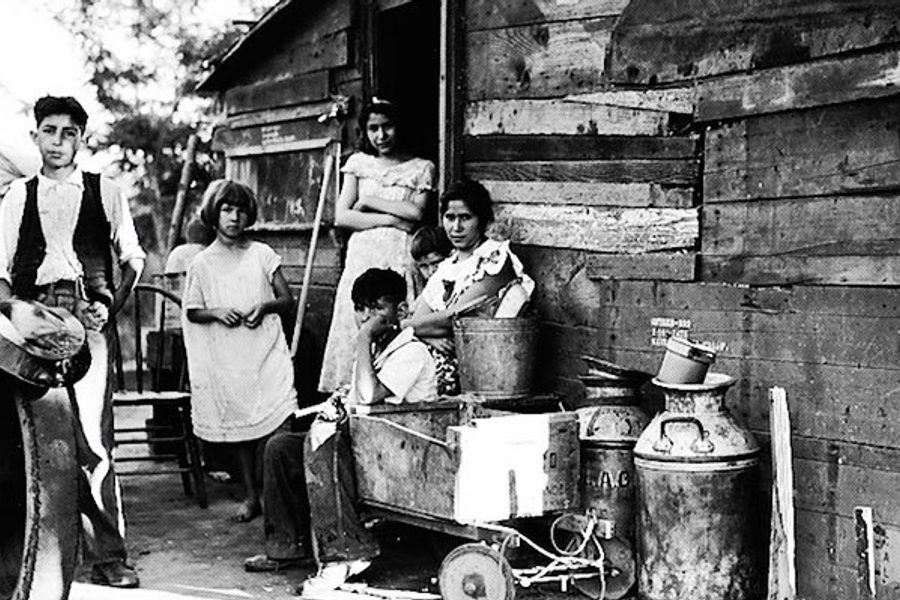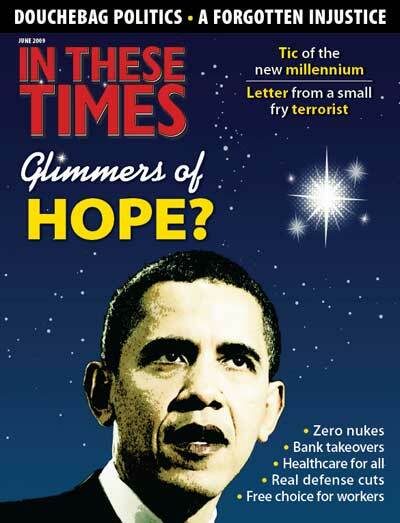Home Again?
A Forgotten Injustice chronicles the mass deportation of Mexican immigrants in the 1930s.
Lou Mattei

With the economy in a rut and anxieties about national security festering in the nether regions of America’s social conscience, it’s minorities – immigrants, outsiders, heathens, you name it – who now, as in the past, bear the brunt of the backlash. Tolerance sounds swell so long as the Dow cries kowabunga. But when fat cats go belly up and “real Americans” fill unemployment lines, fear takes over.
Vicente Serrano’s documentary A Forgotten Injustice chronicles our ability to turn against our brothers and sisters during times of social panic. The film tells the hidden history of the mass deportation of more than 2 million Mexican immigrants in the 1930s. More than 60 percent of those given the boot were U.S. citizens who ended up living in Mexico as illegal aliens.
Serrano’s own grandmother was deported from Los Angeles in the 1930s and ended up living in Mexico for 70 years as an illegal alien. It was her story that, six years ago, inspired the Chicago-based, Emmy-winning Telemundo journalist to start working on A Forgotten Injustice.
“When I learned about the magnitude of the injustices of the ’30s. I felt a responsibility to tell the story of my grandma, her brother and the more than 1 million people,” says Serrano. “I always wondered why my grandmother’s stories ended with tears.”
The historical saga behind Serrano’s film stems from World War I, when American businessmen sent teams to Mexico to recruit replacements for the farmers and factory workers drafted into the army. At the time nobody bothered with documentation or official papers. By 1930, programs like these (called reenganches) helped balloon the population of Mexican-Americans to 3.5 million.
When the Great Depression hit, President Herbert Hoover came up with a plan to deport Mexicans under the banner “American jobs for real Americans.” The reasoning, besides overt racism, was that it was cheaper to deport Mexicans than other groups of immigrants because of the proximity of the border.
But when Los Angeles County opened up a deportation office to carry out President Hoover’s plan, it faced a serious jurisdiction problem: Only the federal government is allowed to enforce immigration laws. So the term “repatriation” was coined to gloss over a dubious legal situation – and to try to dupe more than 1 million citizens born and raised in the United States into feeling like they were returning home to a country they’d never been to before.
To make these deportations seem voluntary, the government told recalcitrant Mexican-Americans that they were going to be cut off from federal aid at a time when nearly 20 percent of the country relied upon it. Violence and intimidation put muscle behind the threat of expulsion.
Raymond Rodriguez, co-author of Decade of Betrayal: Mexican Repatriation in the 1930s, says in the film: “Groups of vigilante-type individuals would come onto a Mexican labor camp and say, ‘If you guys aren’t out of here in the morning, we’re burning you out.’ So people left. Or, in other instances, people would be forced to leave by the sheriff coming to your place, putting a gun to your head and saying, ‘If you don’t leave, you’re dying.’ “
According to Francisco Balderrama, the other author of Decade of Betrayal, “If you think about the forceful tactics of the county agencies, the forceful tactics of those employers like U.S. Steel, Ford Motor Company, Southern Pacific Railroad, or the forceful tactics that one reads in the press … without any distinction made in terms of citizenship or legal status, it was coercion, plain and simple.”
Civic groups like the L.A. Chamber of Commerce celebrated that “many Mexicans are absolutely terrorized and are ready to do anything to get out of Los Angeles.”
On the other side of the border, muralist Diego Rivera was fronting a push by the Mexican government to reclaim the population that America was trying to expel. His hope was that “repatriates” would return with personal and social virtues acquired by living in the United States. In reality, “repatriates” came back poorer to a country – and in many cases a language – they didn’t know.
Amazingly, during World War II, when draft letters showed up at these expatriates’ homes, many were eager for the opportunity to serve.
“To me that was so strange and sad because they wanted me to defend the U.S. after they had kicked me out and sent me to Mexico,” says Jose Lopez in the film. He was repatriated from Detroit, Mich., in 1931, but was still willing to serve. “Naturally, I would have done it with pride, I think. But then they told me that I was too small, and they didn’t accept me.”
Behind the “repatriation” campaign lurks a specious interpretation of the Constitution. Lawmakers exploited the vague language on citizenship in the 14th amendment to validate the repatriation of undocumented immigrants – including those who would be considered legal citizens today. It’s the same ambiguity exploited today by nativists who see “anchor babies” as weapons in an us-versus-them conflict of immigration.
But Serrano’s story may have found an opening. In April, A Forgotten Injustice was featured at the Chicago Latino Film Festival. And Serrano has been screening the film as often as possible, holding Q&A sessions afterward, where he’s often greeted by emotional survivors.
“I think that is another beautiful experience of working on A Forgotten Injustice,” Serrano says, “creating an opportunity to organize and engage people in healthier debates about social justice, immigration, civil rights … I hope this film brings people with different views to a common place and serious debate about the issues.”
Following its 2003 investigation into the “repatriation” campaigns of the 1930s, the California State Senate apologized for the state’s role in the illegal deportations and, in 2007, passed a resolution requiring its history to be taught in public schools. A similar measure was approved by the Illinois State Senate in March and is currently under consideration in the House. But a bill to fund an investigation into this period, introduced into the U.S. House of Representatives in 2006 by now-Labor Secretary Hilda Solis and co-sponsored by Obama’s Chief of Staff Rahm Emanuel, among others, went nowhere.
“I believe that people that don’t know their history are condemned to repeat it,” says Serrano. “Every time there is an economic crisis, society looks for a ‘bad guy’ or a scapegoat. It happened in the 1930s, and it can happen today if we don’t do anything to avoid committing the same mistakes. Just listen to some of the hate language used today: invasion, massive deportations, ‘American’ jobs. … It is the same language used in the 1930s. Obviously the times are different, and probably the context is different as well, but the outcome can be the same.”





